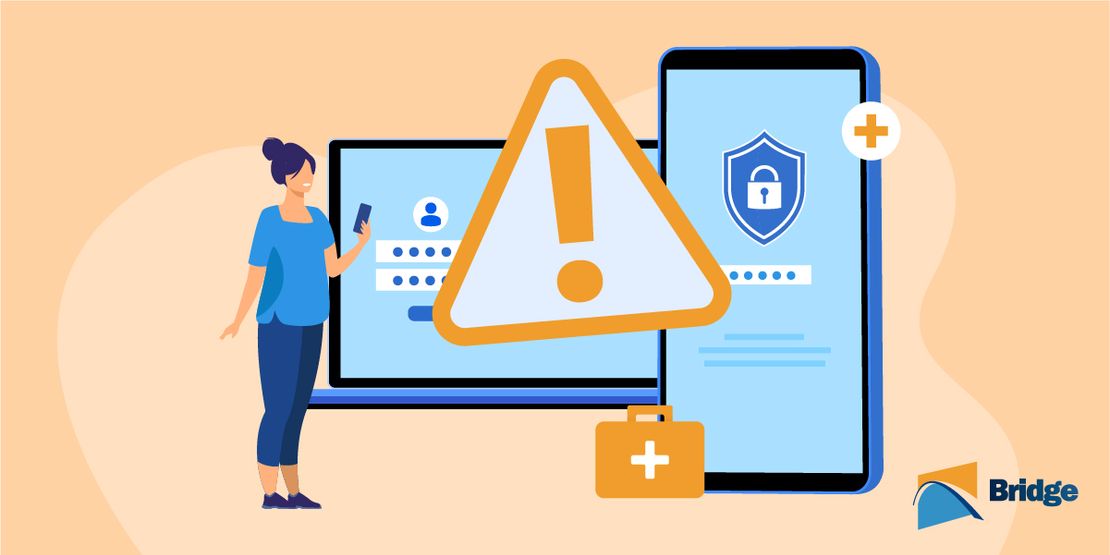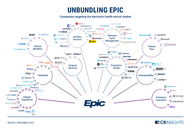EMR Patient Portals Are Frustrating Your Patients
- John Deutsch
- November 24, 2021

The recent acceleration of virtual care is causing waves across the healthcare industry. In an attempt to keep up with an increased demand for online services for patients, current Electronic Medical Record (EMR) vendors are promoting more and more piecemealed patient engagement solutions to keep up with increasing demands for digital care which in turn provides a poor user experience and risks decreased long-term use. It’s important to note the pitfalls of this disconnected system and what can be done to remedy it as the consumerization of healthcare continues to gain momentum.
How Current EMR Patient Portal Vendors are Falling Behind
With telehealth use having increased almost 3000% in 2020[¹], established and well-respected vendors such as Epic® are having difficulties supporting the many facets of virtual healthcare. Juggling video conferencing technology, patient intake, digital billing systems, and more all while attempting to launch a digital front door has forced EMR vendors to add increasingly more fragmented and piecemealed solutions to their patient-facing technology offering. In order to keep up with the demand for patient-facing features, they will sometimes acquire or partner with smaller niche companies which results in several complications.
As providers adopt multiple disparate solutions, the user experience suffers even from the very first point of contact. It’s difficult for patients to remember multiple Health Insurance Portability and Accountability Act (HIPAA) compliant passwords and logins. In many cases, these technologies do not use logins at all, instead offering weak authentication controls based on entering a series of commonly known patient identifiers. Constantly re-entering data is time-consuming and unnecessary and poor user interfaces make using current EMR patient portals confusing to navigate. Additionally, due to the increasing number of third-party solutions, it’s difficult and costly to integrate each one into a single understandable system. With high licensing costs for using many patient engagement solutions, clients are often charged a fee for the integration of these third-party solutions or decide to live with light integrations which eventually impact the success of the solution. Considering the fact that patients highly prioritize user-friendly portal access[²], all these shortcomings result in substandard customer service and serve to dissuade patients from using patient portals and online services altogether.
Some companies have made it difficult to share records with other health systems, driving federal intervention and healthcare organizations to move away from the old services like Epic, Cerner®, and eClinicalWorks®[¹]. For these reasons, the time is ripe to leave behind outdated technology and adopt a long-term solution that fully integrates modern patient engagement features into one system.
Bridge’s Comprehensive Solution
Adding a digital front door that connects all the touchpoints of virtual health is necessary at a time when patients are looking for more personalized treatment. This can be accomplished by implementing a comprehensive patient engagement solution, which offers a suite of patient engagement features. A platform like Bridge provides the patient with a single solution that integrates all aspects of digital healthcare to streamline the patient’s journey. Features such as patient forms, care plans, online medical records, bill pay, and patient messaging are available using a single platform to allow for a seamless user-friendly experience.
The Advantages of a Modern Patient Portal Program
With Bridge patients no longer have to deal with remembering multiple passwords or accessing different platforms to complete actions such as sending messages or obtaining records. Patients can also log in using biometrics, which includes face ID or fingerprint ID. An intuitive web design where questions can be answered in as few clicks as possible is an important first step. With a user-friendly interface, there’s no guesswork as to where patients need to go, allowing organizations to better retain patients.
Bridge’s platform has powerful interface capabilities for the seamless exchange of data between EMR, Revenue Cycle Management (RCM), and Precision Medicine (PM), which is key to a successful patient portal program. With only one “pipe” of data between the source systems and the patient portal program, healthcare organizations can achieve richer functionality with less effort.
With data in mind, the collection of user data and behavior is made simple. Utilizing this data will give providers the ability to adapt and improve the patient experience. It can be used to send appointment reminders, medication reminders, provide personal education materials, and even determine the likelihood of receiving payment. Moreover, by cutting out the financial burden of paying for multiple third-party solutions, providers can save money and time without worrying about short-term band-aid fixes.
There is also evidence that 95% of physicians found that using data interoperability helped them improve patient experiences and outcomes, and with 75% of patients interested in technology-based intervention for their health[³], it’s imperative to give as much incentive as possible to consumers to fully participate in digital care.
As patients drive the need for more personalized care, Bridge’s all-in-one digital front door offers an elegant solution to the previous piecemealed fixes of yesterday’s EMR vendors.
DISCLAIMER: All product and company names are trademarks™ or registered® trademarks of their respective holders. Bridge Patient Portal is not affiliated, endorsed, or sponsored in any way by the service providers mentioned in this article.
- CB Insights. (2021). Unbundling Epic: How The Electronic Health Record Market Is Being Disrupted. [online] CB Insights. Available at: https://www.cbinsights.com/research/electronic-health-record-companies-unbundling/?utm_source=pocket_mylist
- Wildenbos, G.A., Horenberg, F., Jaspers, M., Peute, L. and Sent, D. (2018). How do patients value and prioritize patient portal functionalities and usage factors? A conjoint analysis study with chronically ill patients. BMC Medical Informatics and Decision Making, 18(1). [online] BMC Med Inform Decis Mak. Available at: https://www.ncbi.nlm.nih.gov/pmc/articles/PMC6249922/
- Google Cloud Blog. (2021). New Research: COVID-19 accelerates innovation in healthcare but tech adoption still lags. [online] Google Cloud Blog. Available at: https://cloud.google.com/blog/topics/healthcare-life-sciences/google-cloud-covid-19-research.

